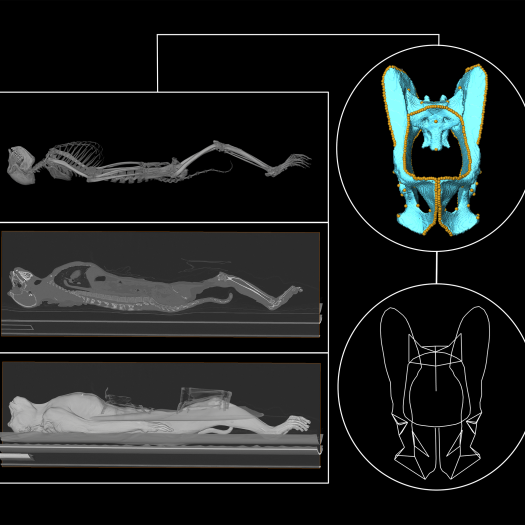The effects of hybridisation on skeletal morphology: using a macaque model to explore human evolution

Lara T. Buck, pelvis workflow

Lara T. Buck, pelvis workflow
Jeudi 12 mai 2022 à 13h en salle Chevalier (MH) et visioconférence, par Laura T. Buck (School of Biological and Environmental Sciences, Liverpool John Moores University, UK et Department of Anthropology, University of California Davis, USA)
Intervenante : Laura T. Buck (School of Biological and Environmental Sciences, Liverpool John Moores University, UK et Department of Anthropology, University of California Davis, USA)
Résumé :
Recent advances in genetics have uncovered hybridisation during human evolution, yet its morphological impact remains underexplored. Studies of non-human primates have suggested a signature hybrid morphology including extreme size, high levels of variation, and markers of developmental instability, but how phylogenetic distance and admixture proportion affect these characteristics is unknown. To understand the hominin fossil record, we must study admixture in taxa that approximate hominin hybridisation as closely as possible. Our project employs macaque proxies (Chinese and Indian Macaca mulatta) with comparable divergence time (in generations) to Homo sapiens / Neanderthals. Our sample is large, multigenerational and of known hybridity. We focussed first on the pelvis, which has potential fitness implications for hybrids if successful birth is compromised. We found no individuals showing extreme morphology. Instead, there was a significant, but weak, hybrid signal proportional to the relatively small morphological difference between the parent taxa. We also present here preliminary results from size analyses on the same sample, which show a similar pattern. The closeness in shape between the full-bred macaques is in contrast to that between Neanderthals and H. sapiens, despite comparable phylogenetic divergence. The wider disparity between the hominins may owe something to adaptation their respective environments, but may also reflect greater cultural buffering in hominins enabling greater neutral evolution. Our work highlights one of the fundamental ways in which hominins may differ from our primate relations and provides a way forward to unpick the effects of hybridisation on hominin morphology.

Lara T. Buck, pelvis workflow